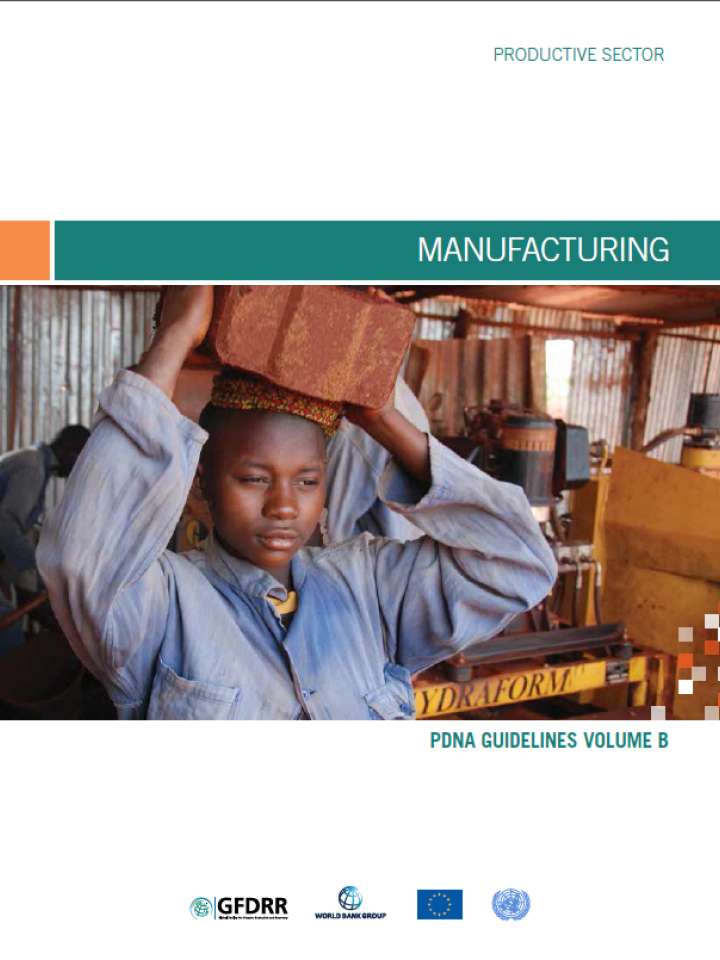Post-disaster needs assessments guidelines: Volume B - Manufacturing
This chapter describes the procedure to assess the effects of a disaster on the manufacturing sector, following the traditional methodology originally developed by the United Nations Economic Commission for Latin America and the Caribbean (UN-ECLAC) (Handbook for estimating the socio-economic and environmental impact of disasters, 4 volumes, United Nations, 2003), further developed by the World Bank´s Global Facility for Disaster Recovery and Reduction (GFDRR) (Guidance Notes for Damage, Loss and Needs Assessment, 3 volumes, The World Bank, Washington, D.C., 2010), and now expanded and adopted by the Post-Disaster Needs Assessment (PDNA). Application of the methodology enables the assessment of disasters’ economic and social impacts on the manufacturing sector, and the estimation of post-disaster needs for recovery and reconstruction.
After a disaster, the manufacturing sector may sustain damage that may include buildings, equipment and machinery, stocks of raw materials and of manufactured goods. In addition, after a disaster the sector may face changes in its production flows, including production decline and possible higher costs of production arising from the destruction of assets or
other causes associated with the disaster (such as lack of raw materials, strategic inputs of water and electricity, temporary absence of labor, lack of working capital, etc.). Furthermore, some branches of industry – such as the food producers – that rely on the production obtained from other sectors of the economy for raw materials may suffer production declines even
if no damage has happened to their facilities.
This volume of the Post Disaster Needs Assessment Guidelines is available in English, French, and Russian.
Explore further
